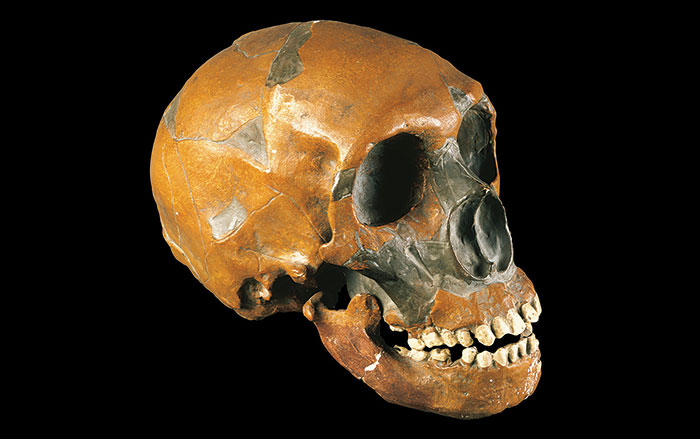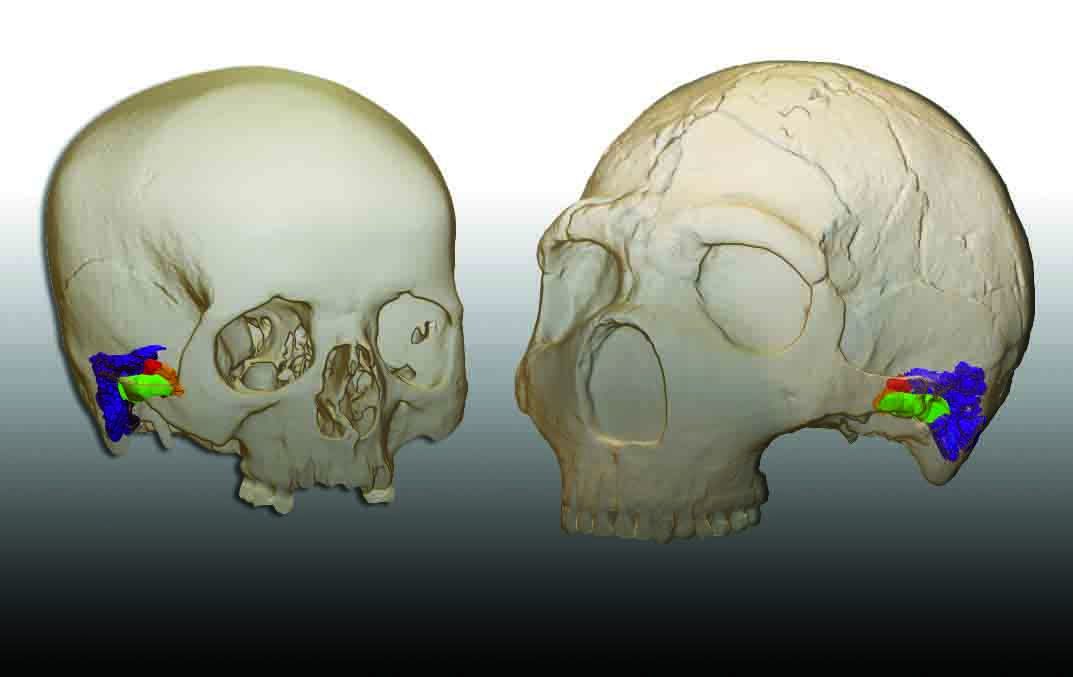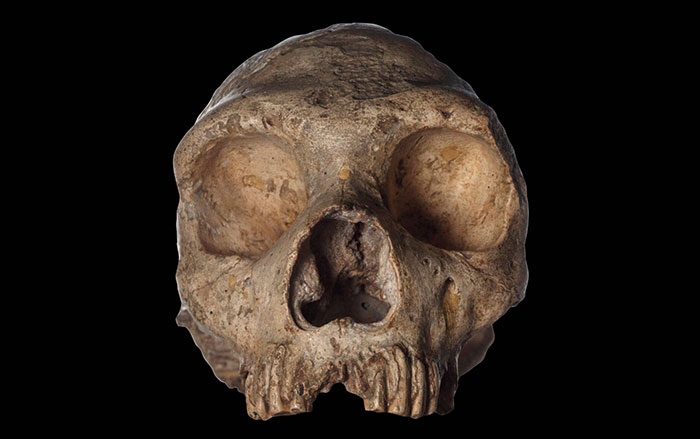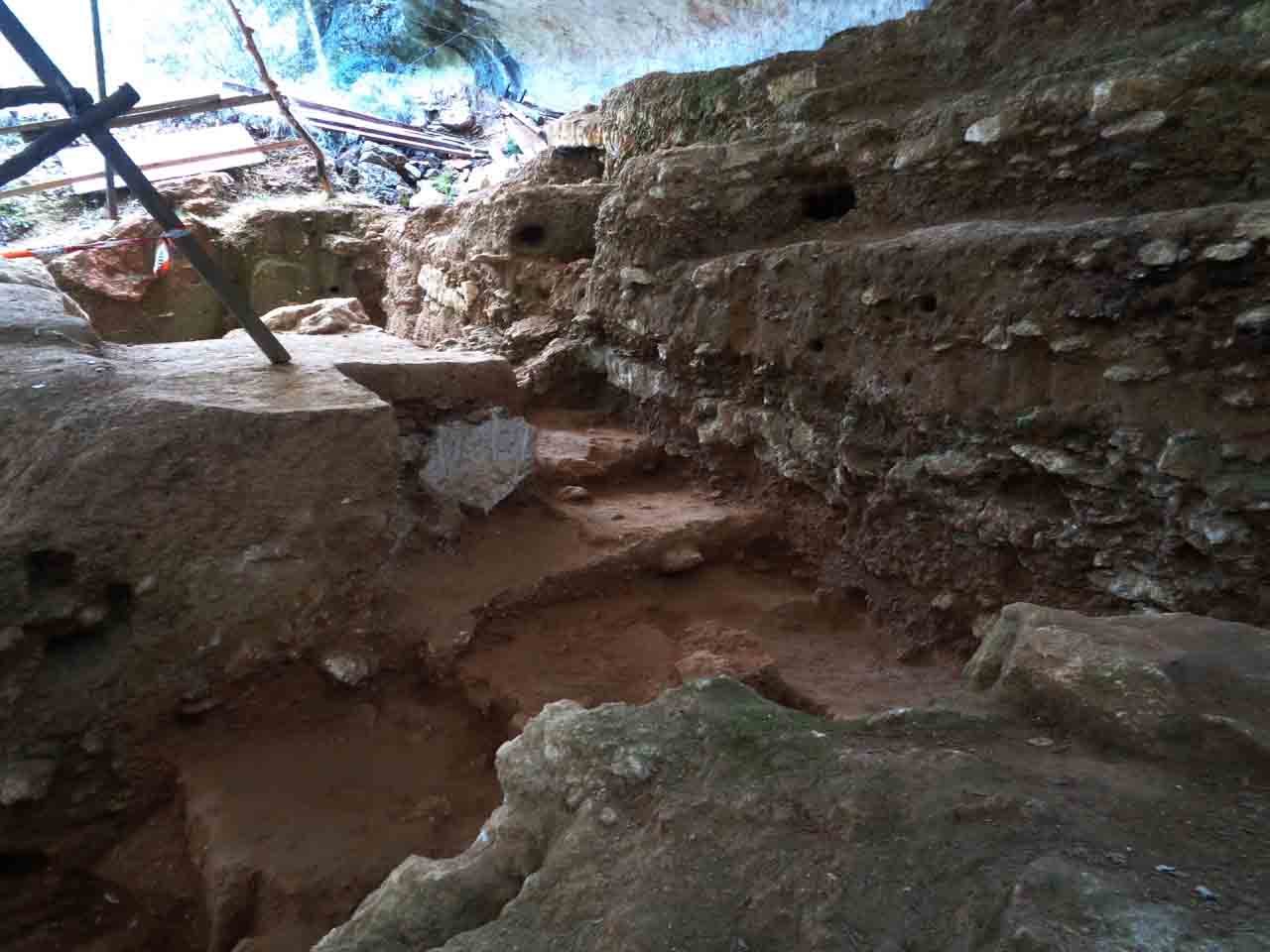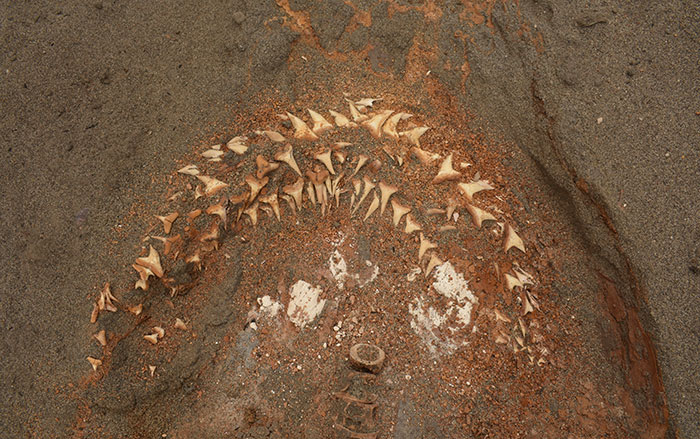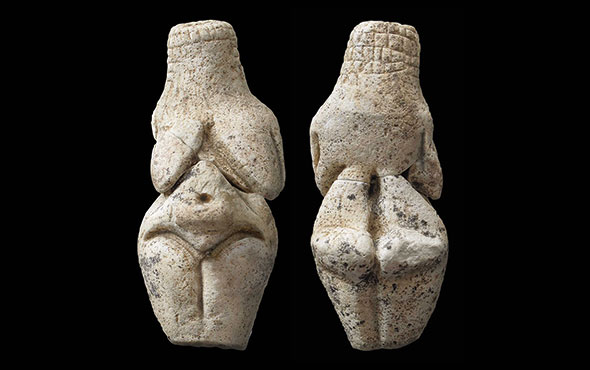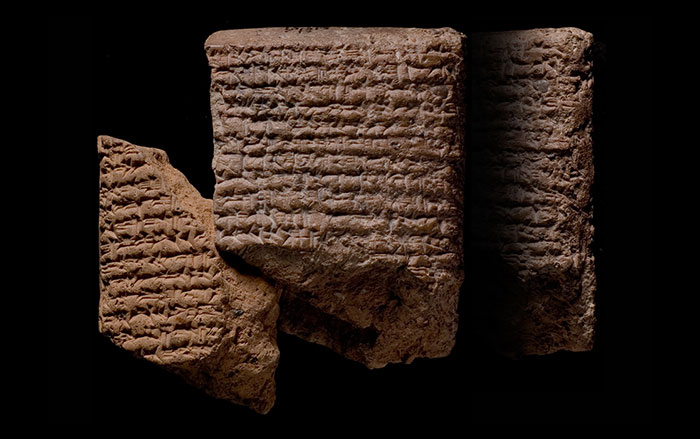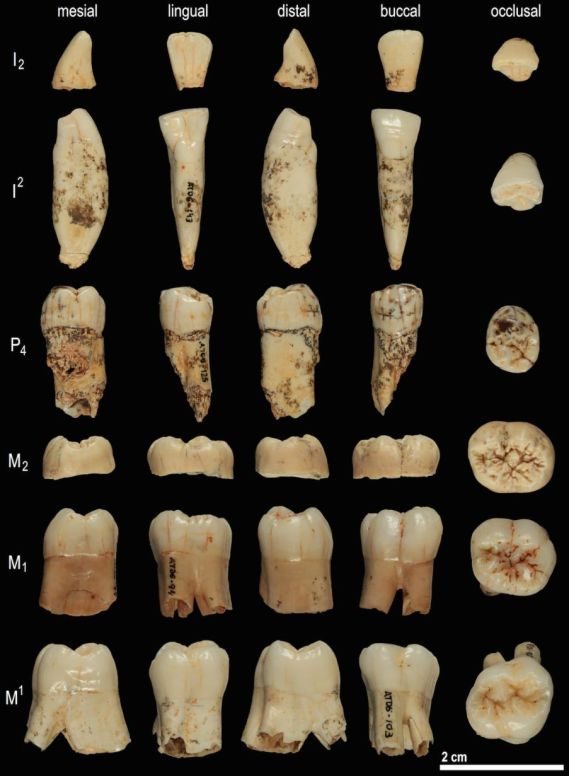
COPENHAGEN, DENMARK—Science Magazine reports that geneticist Enrico Cappellini of the University of Copenhagen and his colleagues used mass spectrometry to analyze proteins extracted from a sample of Homo antecessor tooth enamel. The remains of this H. antecessor individual, recovered from northern Spain’s Gran Dolina Cave, have been dated to 800,000 years ago. H. antecessor is known for its large teeth, which seem primitive for its more modern human–like face shape, and has been considered as a possible last common ancestor of modern humans and other archaic humans. Cappellini and his team were able to identify seven proteins in the tooth enamel and determined the individual was male. Comparison of the protein sequences with living apes, modern humans, Neanderthals, and Denisovans suggest that H. antecessor was closely related to the last common ancestor of modern humans, Neanderthals, and Denisovans. “We see that antecessor falls as a sister group—close, very close—to the branch that leads to us,” Cappellini said. To read about DNA analysis of modern humans' closest evolutionary cousins, go to "Neanderthal Epigenome."


